The New Gastronome
Herbal Infusions
Capturing Flavour
by Nicola Robecchi
by Nicola Robecchi
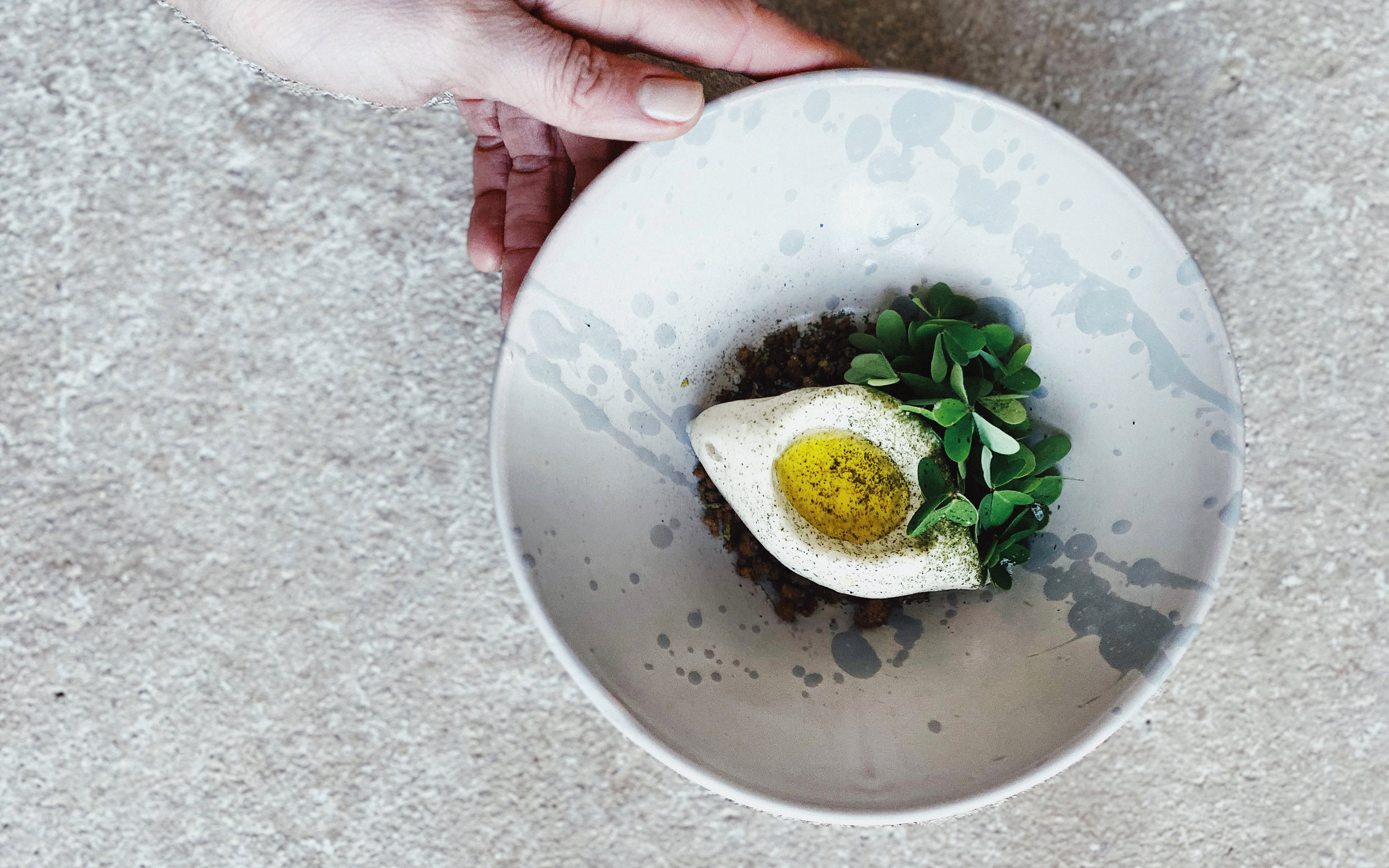
When you think about an infusion, you might envision a nice steaming mug of tea waiting for the right time to be sipped – possibly on a table. To be enjoyed to the fullest, however, infusions take time in preparation, as they need to rest.
Herbal teas are the simplest way to consume and benefit from herbal oils and flavours. When we talk about infusions, we refer to the maceration process (immersion) of a plant in a liquid, normally in water. The longer the plant gets soaked, the more the liquid will absorb its oils and flavours, giving the final beverage a perfect balance between taste and beneficial properties. Herbal teas can be called an infusion as they are created by infusing leaves in hot water. The resulting beverage is milder than a typical infusion due to the shorter soaking time but no less tasty.
We might ask ourselves if infusions are the only way to consume herbs. Absolutely not. In fact, the opposite is the case. While spices are most commonly used in cooking, medicinal herbs offer a whole new world to food preparation. But, let’s discover how to use infusions as an ingredient first.
A. D. V. E. R. T. I. S. I. N. G.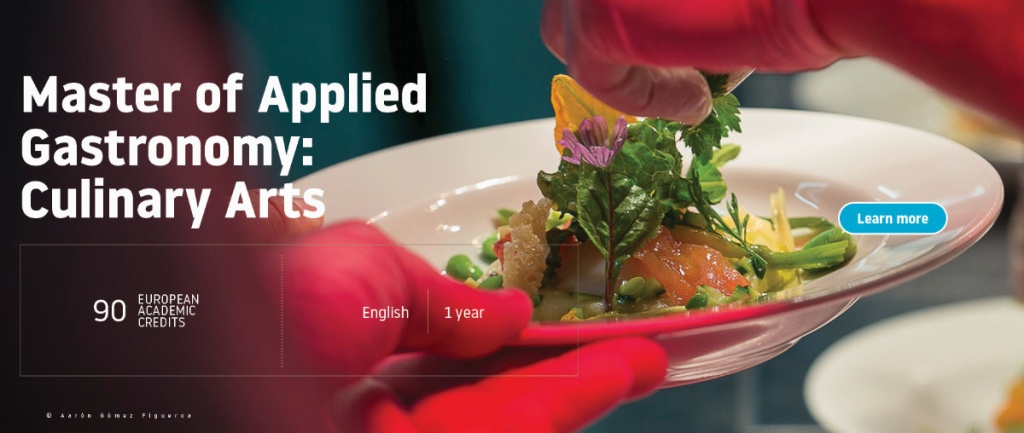
Whether as a result of an alchemical or magical knowledge or learnt by heart and handed down from generation to generation, real infusions are made of roots, sprouts, leaves and flowers. Nothing goes to waste when we talk about plants and infusions. The main difference between teas and infusions is that the former uses only leaves in the maceration process. Traditional herbal teas can be considered a short infusion, while real infusions are sometimes called long infusions in order to differentiate them from teas. Nevertheless, also high-quality tea leaves can be infused for longer periods of time, without becoming undrinkable. When we talk about cooking and food preparation for mixology, we always refer to these long infusions that extract all the benefits, flavours and essential oils from the plant. Later, this extraction will become a concentration that will be “diluted” with the recipe’s other ingredients.
When we feel confident in dealing with medicinal herbs for tea and after having experimented with concentrations (g/ml), soaking time and the infusion liquid, we can play with different plants and their essential oils. More than the fragrances that can be extracted, it’s the intensity of the medicinal herbs that can be truly amazing, the ability to add complexity and personality to any dish, beverage or leavened product.
Here are four recipes made by artisans and professionals close to herbal teas’ culture. These recipes are intended to be the starting point for culinary creativity, to combine the culture and flavours of medicinal plants, one of the most precious gifts from nature. A gift, man has interpreted with sensibility and diversity.
The Infused Bread
A couple of hours before preparing the bread, infuse the herbal tea in 50g/ml of water at 90-95 °C and let it cool down. When it’s cooled down, the extraction of the medicinal plants’ essential oils and flavours will be complete. Furthermore, if the plant quality is good, you won’t taste bitter or astringent notes.
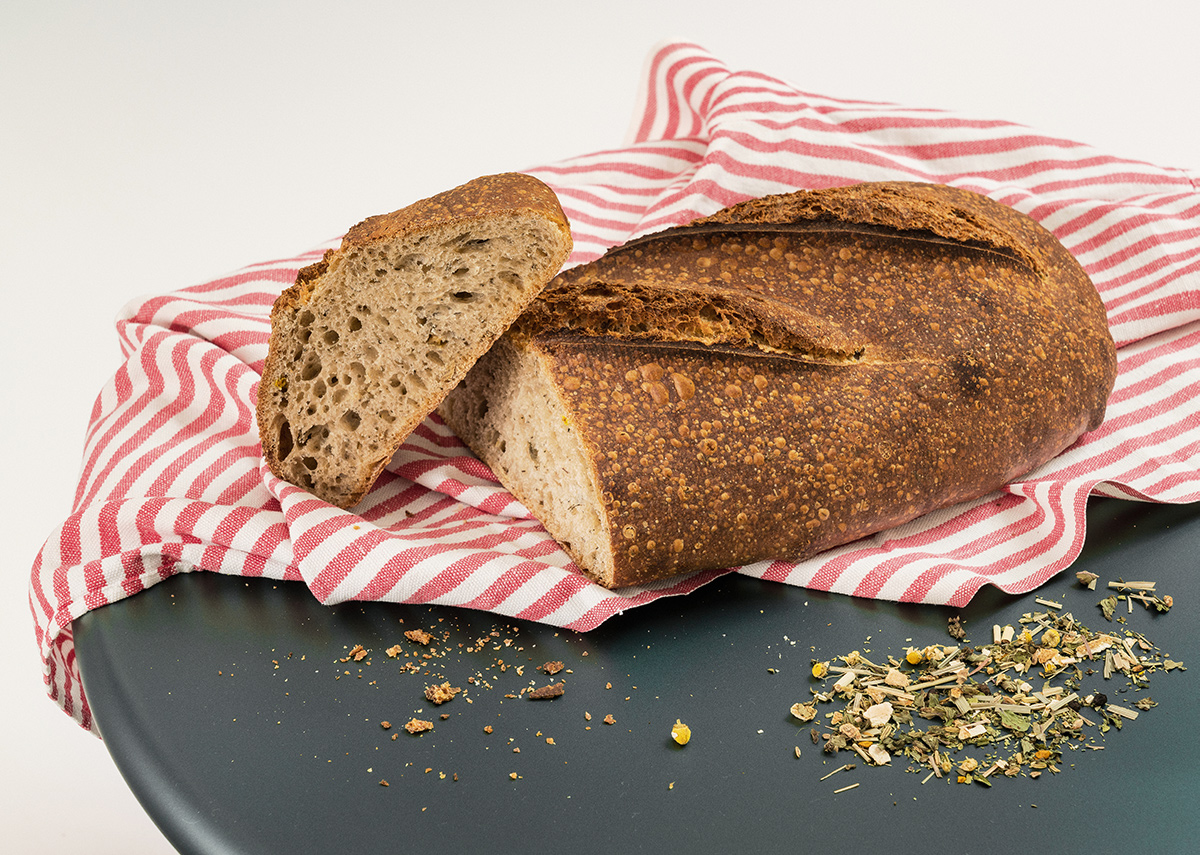
Coarsely mix the flour, water and yeast and let it rest for 30 minutes. Add the salt, wait for it to be absorbed by the mixture, then pour in the herbal tea infusion. Knead until you have a smooth and homogeneous mixture, then transfer everything to an oiled container and leave it to rest for about two and a half hours.
Afterwards, turn it upside down on a floured counter and proceed with the moulding, by folding the dough on itself first in one direction, then in the other. Place the dough in a bowl with a lightly floured cloth, let it rest for another 3 hours at room temperature or about 10-12 hours in the refrigerator. Heat the oven to the maximum, turn the loaf out, cut the surface as you prefer and bake for about 30 minutes, then, open the door for a few seconds and lower the oven temperature to 210-220°C and bake for another 20 minutes.
Recipe by Aurora Zancaro, Le Polveri (Micro bakery in Milan), with Wilden herbal tea Remedium n. 4 – Hangover
The Infused Meringue
Crumble the herbs, put them into the egg whites for a cold infusion and let rest overnight. In the morning, start whipping the egg whites in a planetary mixer with a thin wire whisk at medium speed, then add the sugar. Whisk until a well-structured meringue is obtained. Pipe on parchment paper and bake at 100 °C for one to three hours, depending on the format of the meringues. Keep in a cold and dry place.

Recipe by Marcello Rapisardi, Pasticceria Rapisardi (Bakery in Milan), with Wilden herbal tea Remedium n. 4 – Hangover
The Infused Ice Cream
Tools
Pour milk and cream in a saucepan and heat until the temperature reaches around 65 °C. Open the tea bags and pour the herbs into the hot milk and cream mixture. Stir it up, put it aside, cover with plastic wrap and let the herbal tea gently infuse for an hour. Then, filter the mixture through a sieve and add honey, sugar and carob flour. Put it on the stove again and cook until the temperature reaches around 80° C, while you keep stirring. Use the immersion blender to emulsify it, pour the mixture in an airtight container and let it cool. Leave it in the fridge for 12 hours to thicken. Use the immersion blender again to emulsify and pour the mixture into the ice cream machine.
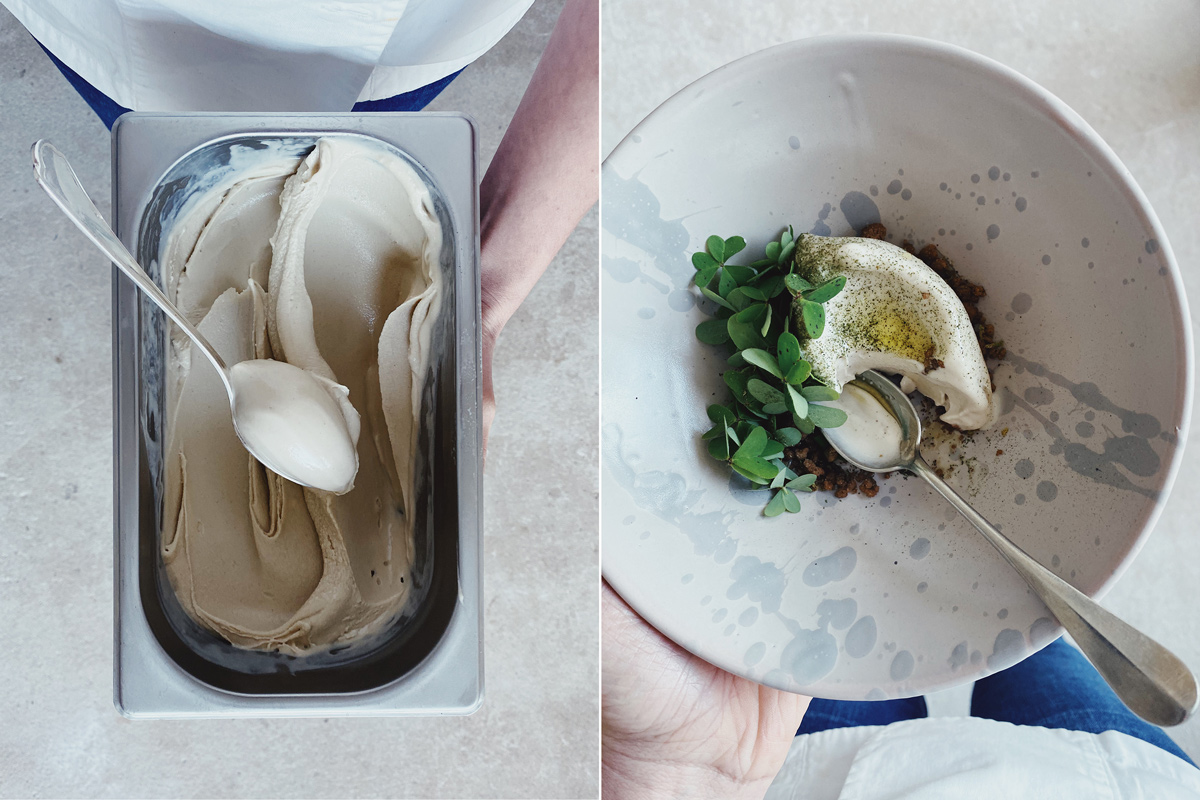
Recipe by Giorgia Eugenia Goggi, Masseria Moroseta (Puglia), with Wilden herbal tea Remedium n. 4 – Night
The Infused Cocktail
Make a concentrated infusion of Remedium n. 5 – Focus (5g per 200ml water) and leave to cool. Mix the infusion and the tonic water in equal parts. Then, add a dash of lemon juice and pour into a glass filled with ice for 3-4 cl of Mezcal. Garnish with grapefruit zest and fresh mint.
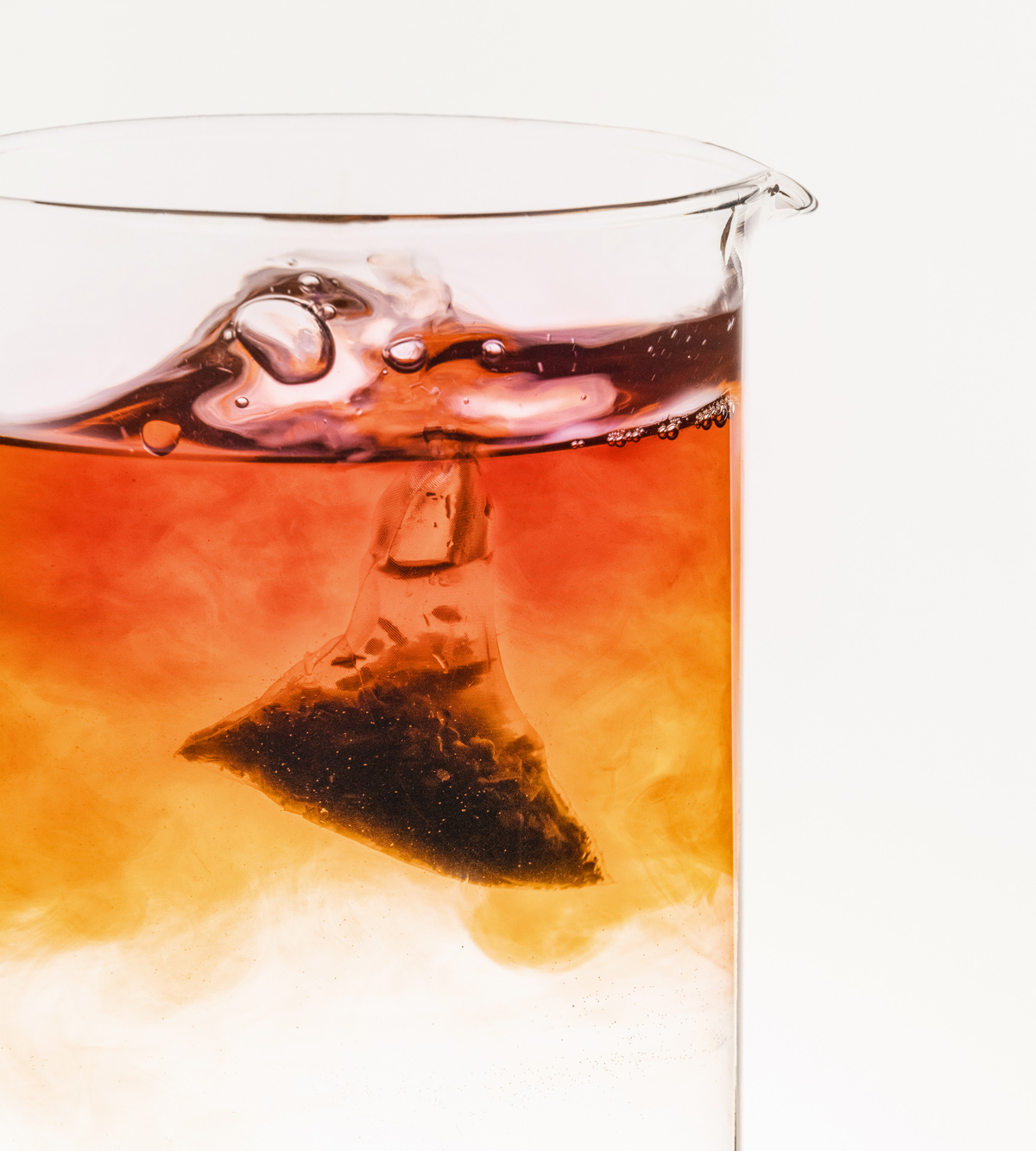
Recipe by Khris, Ral Cocktail Bar (Milano), with Wilden herbal tea Remedium n. 5 – Focus
Cooking with medicinal plants can add a whole new level of diversity to your cooking adventures, by enhancing endemic varieties and traditional centenary cultures. Create new exciting recipes, no matter whether you want to infuse the herbs in milk, water or even egg whites.
Ice Cream Photo Credits: Giorgia Eugenia Goggi
Photo Credits: Delfino Sisto Legnani
